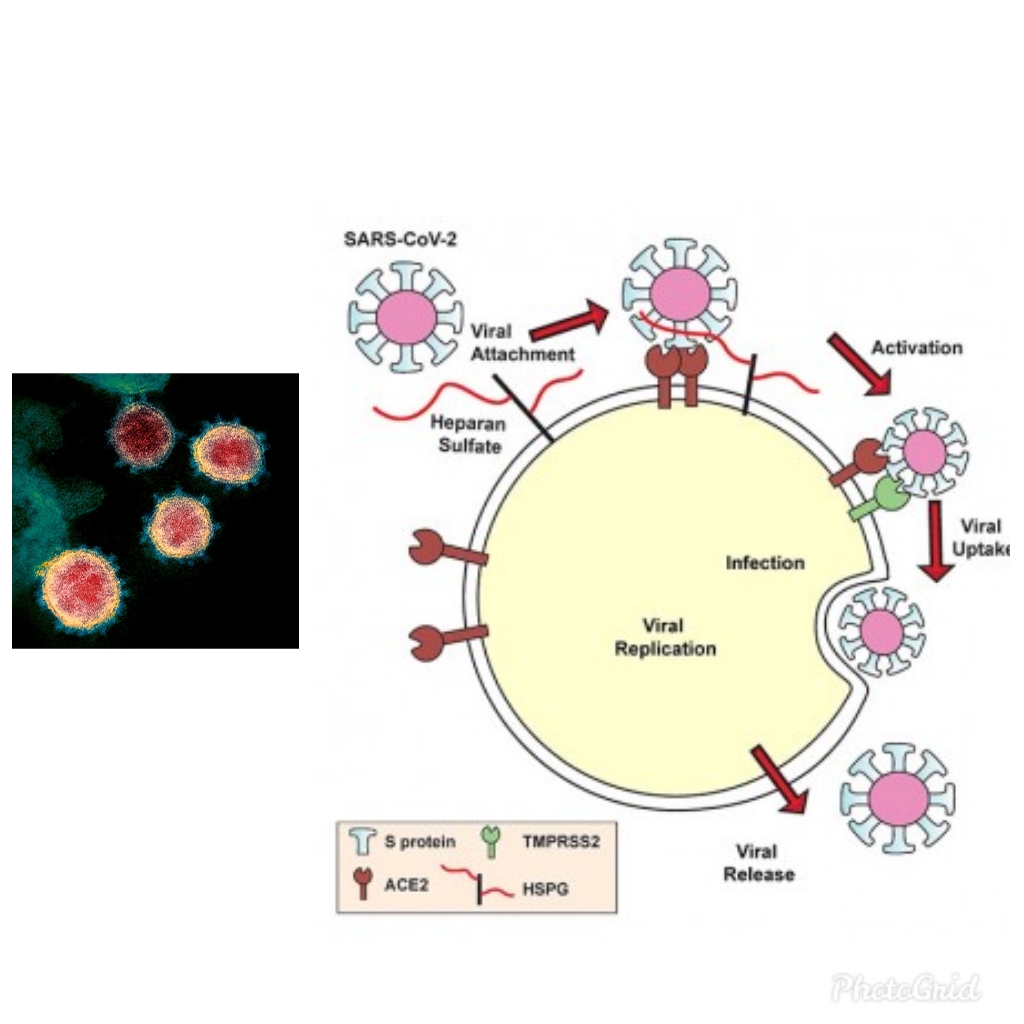Since the entire world has come under the grasp of Coronavirus disease, researchers are trying to dissect out the exact mechanisms and pathways behind the attachment of the virion particle to the cells of the infected host body. It had been found out that Coronavirus attaches to the host cell body through the ACE2 receptors (Angiotensin Converting Enzyme 2). This category of the receptors is predominantly found on the surfaces of the alveolar epithelial cells in the lungs.
ACE2 receptor is crucial to the pathways which modulate blood pressure in the body and in wound healing, an important example being RAAS system. ACE2 is crucial to the breakdown of Angiotensin II (ANGII) which can cause inflammation and even result in death of cells in the lungs. The infection of the lung cells with Coronavirus prevents the ACE2 from performing its function of converting Angiotensin II (ANGII) which damages the lungs at cellular level to other biomolecules. Till the latest discovery of a co-receptor, this was considered as the complete story of ACE2 in the context of Coronavirus disease.
Recent research in UC San Diego Health Sciences has revealed another key element in the binding process of the virion particles to the cells. Presence of a carbohydrate ligand- Heparan Sulfate, on the ACE2 receptors in the host cells as co-receptor helps in binding of the Coronavirus particles to the cells.
Viral particle gets in the cell through endocytosis which is generally a three step process- attachment, activation, and uptake. The heparan sulfate on host cell ACE2 helps in the attachment step for the virus. Heparan sulfate is a polysaccharide (linear) having around 50 to 200 uronic (either glucuronic or iduronic acid) and uronic acid repeats in disaccharide form with different sulfations and epimerization. It is a widely expressed glycosaminoglycan. On the viral-capsid structure of Coronavirus, Spike proteins are present which help in linking the virus onto the cell. In this spike protein, the receptor binding site attaches to the ACE2 receptor after the initial attachment through the Heparan Sulfate. When spike protein attaches to both the Heparan sulfate and the ACE 2 receptor, it causes activation of the viral intake in the cell body.
Interesting facets of the Heparan sulfate helped the researchers to guess the possible treatment methodologies for Coronavirus. The co-receptor Heparan sulfate is a modified version of Heparin, which is a well known anti-coagulant. Flooding the system with Heparin can help is baiting out the Coronavirus from the affected body. In another approach, treating with enzymes which break down heparin (for example-Antithrombin III and HS lyases) can also help in preventing infection as this treatment would break down the co-receptor on the host cell bodies.
HS is immunologically important as most immune system proteins express the heparin-HS binding motifs. This recent discovery of its role in the binding step for Coronavirus makes it a therapeutic target site for further medical research.





